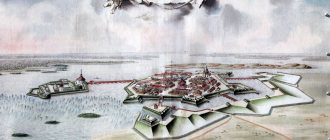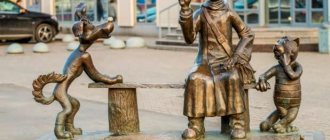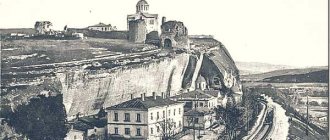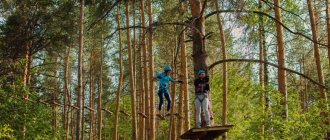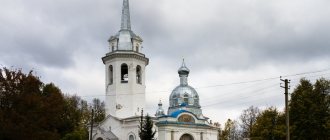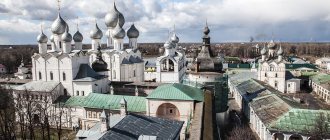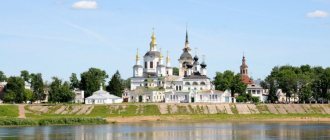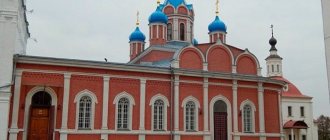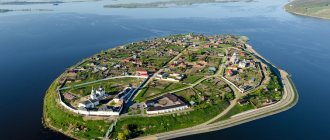Strelna is one of the most interesting suburbs of St. Petersburg. Its name comes from the name of the Swedish manor (estate) that was once located there - Strelna Hof. And she got this name from the Strelka River. It is noteworthy that initially Peter I wanted to locate Petrodvorets there. Therefore, a few years after the founding of St. Petersburg, the construction of a royal estate, the construction of a pond, a greenhouse, a church, and a garden began here.
In Peter I's garden grew his favorite tree - a large old linden tree. There is a legend that in its crown the sovereign built himself a gazebo from which he admired the sea view. The linden tree, of course, did not survive to this day and was replaced by another, which is still alive today.
Potatoes were first grown in Strelna after they were brought from Europe. And in the palace cellars there were many wines from Hungary. Already today, during one of the international meetings, V.V. Putin was presented with a collection of expensive wines. So the cellar of the Strelninsky Palace is still used for its intended purpose.
For an overview of all the suburbs of St. Petersburg and places in the Leningrad region that are interesting to tourists, follow the link. We would like to especially mention the guides to Peterhof and Lomonosov, a trip to which can be combined with a visit to Strelna - they are very close.
You can get to Strelna by train from the Baltic station (directions Kalishche, Oranienbaum) or by minibuses T-103, T-224, T-300, T-404, T-424, T-850 from the Baltic station, Avtovo metro stations "or "Leninsky Prospekt". Near Avtovo you can take tram number 36. By car you can drive along the Ring Road, then turn right onto Krasnoselskoye Shosse or along Stachek Avenue, Petergofskoye and St. Petersburgskoye Shosse.
Trinity-Sergius Hermitage
Address: St. Petersburg highway, 15.
You can start your walk by visiting chapels, cathedrals and churches with ancient architecture. They are located on the territory of a monastery founded in the 18th century. Previously, these lands belonged to the sister of Queen Anna Ioanovna, but in 1734 she transferred them to her confessor. Over the course of two centuries, the desert was rebuilt and acquired its usual shape. It was here that ship chaplains were trained for the Russian navy. In 1919, the monastery was reorganized into a children's labor commune. Since the 1930s, a paramilitary security school was organized on this site, and in 1960, a police school. Only in 1993 were the deserts restored.
Konstantinovsky Palace
Address: Berezovaya Alley, 3.
This is an architectural monument of the 18th century, which is a park and palace ensemble; since 2003 it was renamed the “Palace of Congresses”. The first owner of the palace was Peter I, but he did not wait for its construction to be completed. The greatest architects of that time worked on the complex in the Baroque style: Leblon, Rastrelli, Michetti, all of them completed the complex at different times. According to the owner's plans, the ensemble was supposed to surpass the majesty of the French Versailles. However, Peter’s dreams were not destined to come true here either. The area in which the palace is located was in no way suitable for the construction of round-the-clock fountains, as the famous hydraulic engineer Minnich proved to the sovereign.
Until 1917, the complex was owned by the royal family, after which a school-colony, a sanatorium, and naval courses were organized there. During the Great Patriotic War, the complex was destroyed to the ground. In the middle of the last century it was restored, and the Arctic School was opened here. In 2000, the complex was on the balance sheet of the Administration of the President of the Russian Federation; today, major political summits and meetings are held there.
Before you include a visit to the palace in your itinerary, it is worth booking a tour. Admission only as part of a guided tour with a special pass. It is not possible to explore the attraction on your own.
Sculptural group "The Tsar's Walk"
The bronze composition was installed on the territory of Konstantinovsky Park next to the pier in 2003 in honor of the 300th anniversary of St. Petersburg. The group includes figures of Tsar Peter I, his wife Catherine, a court jester, two hunting greyhounds and a throne. All of them stand on a pedestal, on the sides of which there are cannons.
The monument is very ambiguous; when looking at it, one gets the impression that the emperor and his wife are depicted in some kind of comical version: frozen facial features, too solemn poses, and the appearance of the sovereign seems completely asymmetrical due to his small head. But nevertheless, the group fell in love with tourists and became one of the symbols of Strelna.
Address: pos. Strelna, Berezovaya Alley, 3.
Travel Palace
Address: st. Hospital Hill, 2.
This is the earliest building in the village of Strelna. A rather modest wooden structure located on a hill. It served as a temporary refuge for the emperor on his way to Kronstadt or his country residence in Strelna. The palace had modest decoration and, nevertheless, in its frontal area there were fountains rising to a height of 10 meters. According to legend, it was in this place that Peter first planted potatoes brought from Holland. Later, when Peter no longer needed the palace, he gave it to his daughter Elizabeth. The palace was rebuilt twice: during the revolution, a maternity hospital was located here, and in 1950, a nursery was opened. The Palace of Peter I today is the main museum of Strelna; permanent exhibitions and valuable exhibits are located here.
Lviv Palace
Address: St. Petersburg highway, 69.
This building is of a later period; the years of its construction date back to the 19th century. The architect of the project was A.K. Kolman, the first owner was the illegitimate son of Konstantin Pavlovich P.K. Alexandrov. The estate, thanks to this surname, was named Aleksandrovka. Before the revolution, the palace belonged to Prince A.D. Lvov. During the Second World War, the estate was located in occupied territory and was looted and destroyed. The park area has also been lost and is now partially built up by the private sector. Between 2013 and 2015, the palace was restored; now the building houses the administration, the Strelna municipal council, and a music school.
Sights of Strelna, what you can see in Strelna in 1 day
The main attractions for which you should definitely come here are:
- Palace of Congresses;
- Travel Palace of Peter I.
Besides them, there are many more interesting places. These are the Orlovsky Park, the Lviv Palace, the sculptural composition “The Tsar’s Walk”, the ruins of the palace of Prince Mikhail Nikolaevich, the Sergius seaside hermitage.
Palace of Congresses Strelna
Palace of Congresses in Strelna
The Konstantinovsky Palace was originally built as a country estate for Peter I. Peter I planned to create a Russian Versailles here. It was here that a park with fountains was originally planned, which was then moved to Peterhof, due to the fact that the height difference in Strelna turned out to be insufficient for the fountains to work.
After the construction of the park with fountains was postponed, construction in Strelna was abandoned. The residence was presented to Elizabeth I and she continued construction. After 20 years, construction was resumed, but again not completed. Then Paul I gave Strelna to his son Konstantin and it became a private grand-ducal possession. Strelna belonged to the imperial family until 1917.
In Soviet times, there was a colony for minor children “Iskra”. During the Great Patriotic War, the building was destroyed, but after the war it was restored and the Arctic School settled there.
After the school closed, the building stood abandoned until V.V. drew attention to it. Putin. In 2000, by Decree of the President of the Russian Federation V.V. Putin began reconstruction, which was completed by the 300th anniversary of St. Petersburg. The palace and the park were restored in a record time of 18 months.
Living room of the Naiads in the Konstantinovsky Palace Strelna St. Petersburg
The palace was being restored as the state residence of the President of the Russian Federation, so although it was restored according to historical drawings, the main emphasis in the reconstruction project was on providing state receptions.
The historical appearance of the Konstantinovsky Palace and historical interiors were restored, the park and canals are also the same as they were under the royal family, but bridges and fountains previously existed only in projects, those that were conceived by Peter I. Despite the external historical appearance of the palace, equipped with the latest technology.
The Palais des Congresses complex hosted the Russia-EU Summit, the G8 Heads of State and Government meeting and the G20 Leaders' Summit, as well as the draw for the 2018 FIFA World Cup.
Additionally, the so-called “Consular Village” was built here, consisting of 20 two-story cottages, as well as the five-star Baltic Star hotel in the form of an old Russian estate.
How to get to the Konstantinovsky Palace and Park in Strelna, how much tickets cost
Konstantinovsky Palace and Park in Strelna, Leningrad Region
Entrance to the Konstantinovsky Palace and Park in Strelna is strictly on schedule and only as part of an excursion; there is no free admission. The excursion group is limited to 15 people. The excursion schedule is posted at the ticket office, which is located near the entrance to the complex in a separate building. Excursions to the Konstantinovsky Palace are conducted separately from excursions to the park and at different times. That is, you can’t take a tour of the palace and then walk around the park.
To get to the tour desk, you need to walk literally a hundred meters from the stop along Glinke Street and you will see 2 buildings opposite each other, the tour desk closest to you will be where the ticket office is located. Tickets are sold strictly for a specific time; a group is formed in the lobby of the tour desk and, together with a guide, goes on an excursion to the palace.
In the tour desk building there is a free toilet, a vending machine where you can buy water or other drinks, and there is a place in the hall where you can sit while waiting for the guide. Excursions to the park have their own schedule and separate groups. But it is more difficult to get into the park; it is periodically closed for some work; there are much fewer excursions there and they are not held every day.
So, when you arrive in Strelna, you may not always be able to go on an excursion to the park. In order to find out whether there will be an excursion today, you need to call the excursion bureau in the morning at 8 (812) 438-53-65 and it is better to arrive for a ticket before 11.00, otherwise you risk not getting into the park. For some reason, this information is not posted on the official website of the Constantine Palace.
In the summer of 2021, I went to Strelna 2 times and both times I couldn’t get to the park, although I really wanted to. Available only in 2021 .
If you plan to visit both palaces on the same day, it is better to arrive in the morning, as the tour of the Konstantinovsky Palace lasts 1 hour 30 - 40 minutes. The Palace of Peter I is located at quite a distance from Konstantinovsky - the walk is about 30 - 40 minutes. And the ticket office closes at 16.30. So if you go there after lunch, it will be difficult to make it to both palaces in time.
The tour desk is open daily from 10.00 to 16.00, the palace itself is open until 18.00. However, it is closed during government events. And on Wednesday you can only get into it with tickets purchased online. Tickets can be bought online on the official website of the Palais des Congrès, but tickets on the website are sold only for tours of the palace; tickets for tours of the park can only be purchased at the box office.
Tour desk Konstantinovsky Palace
The ticket price depends on the excursion you choose, for adults in 2021 it ranges from 460 to 550 rubles, for schoolchildren - from 300 to 550 rubles, children under 7 years old - free. But benefits for children and schoolchildren are not valid on all excursions. For photographing (even on a phone), you need to pay an additional 100 rubles, you will be given a sticker that needs to be glued to the filming device.
Travel agencies also conduct excursions to the Konstantinovsky Palace. They go on their own schedule and there is no need to worry about tickets. You will be picked up from St. Petersburg and brought back at the end of the excursion. The travel agency Sputnik has very good excursions.
The tour desk building is located outside the territory of the State Complex "Congress Palace". The entrance to the complex passes through a security post, where things are inspected. You go through a metal frame and the items go through a scanner. Previously, for some reason, administrative buildings were not allowed to be photographed, the guide warned about this, but now they say nothing.
Konstantinovsky Palace St. Petersburg
Konstantinovsky Palace in Strelna St. Petersburg.
There are several excursion routes in the palace. The main ones are “The present century and the past” and “The revived plan of the great Peter.” The first route is a little longer, it is the same as the second, it differs only in an additional inspection of the official apartments of the President of the Russian Federation and rooms for meetings in an informal setting. The tour takes place throughout the palace, the guide talks about the history of the palace and its owners.
I went on an excursion “The present century and the past century.” Along the alley of the upper park we reached the Konstantinovsky Palace and found ourselves on the parade ground in front of the palace. In the middle of the parade ground there is an equestrian monument to Peter I. This monument is a copy of the same monument that previously stood in Riga. After examining the parade ground, we went to the palace.
There we were taken through all the halls; in addition to history, the guide told us what each room in the palace is now used for. Everything here, of course, is in perfect condition, this can be seen in the park, where there is not a single extra blade of grass or speck, everything is perfectly trimmed and tidied up.
Blue Hall of the Konstantinovsky Palace in Strelna in St. Petersburg
The palace has preserved all the pomp of tsarist times, gilding, mirrors and marble, it looks very rich and representative. Of course, there is no real antiquity left in the decoration of the palace; everything has been restored, but it is very beautiful.
There is additional security in front of the apartment of the President of the Russian Federation; photography is not allowed there, so we left all the cameras along with our bags on the table in the security room. We were shown only a few rooms, but all were decorated in the spirit of the interiors of tsarist times, with only a TV set from modern times.
Furniture from the 18th and 19th centuries and a collection of porcelain are placed throughout all the halls of the palace; you can also see genuine masterpieces of painting by Russian artists. After touring the palace, we went out onto the upper terrace, which offers a magnificent view of the park towards the bay.
Konstantinovsky Park in Strelna
Park at the Palace of Congresses complex
Konstantinovsky Park is divided into two parts. Towards the bay there is the French Lower Park, towards the Peterhof Highway the English Upper Park, the total area of the parks is more than 200 hectares. The parks are decorated with fountains, sculptures and bridges. The entire parks can only be seen with a separate excursion; there is no free access to them. A 2-hour “Russian Versalia” excursion is conducted along them.
The excursion begins with a tour of the Upper Park. We walked around the Konstantinovsky Palace from above and went down to the Lower Park. The guide talked about how the park was conceived by Peter I, what it was like before the restoration and what was done during the restoration. She also briefly told the history of the Konstantinovsky Palace.
After the war, the park was severely destroyed, many trees were cut down. The work done to restore it is truly titanic. We were shown the grottoes located under the palace from the bay side and told how they were restored. Then we went down, walked along the main canal and went to explore the fountains.
Tulip fountain Konstantinovsky Park Strelna
Peter I planned to build 32 fountains, but abandoned this idea, and during the restoration some of those ideas were brought to life. 8 fountains were built in the park. They are located symmetrically on both sides of the main channel, 4 on each side. The two fountains closest to the palace resemble candlesticks, and the ones further away (they are not visible from the terrace) are called flower fountains.
The fountains were called flower fountains because they were made in the shape of flowers. Jets of water shoot directly from the middle of the flower cups. Two large fountains tulip and pink and four small ones: lilies, snowdrops, water lilies and gladioli. The flowers are made of metal and look very beautiful.
Since the park is regular, it all consists of smooth paths and beautifully trimmed bushes and trees. The area is decorated with flower beds and sculptures. Near the palace the bush is low and planted in an original pattern. And then the trees and bushes are much higher, creating the illusion of palace walls.
Lower Park in the Konstantinovsky Palace Strelna in St. Petersburg
The park is riddled with canals. Navigable canals with drawbridges. The bridges are made as copies of the palace bridge and extend in both directions. So official delegations can travel both by land and by water. At the end of the central channel there is an island on which a negotiation pavilion is located. This is a completely modern building. During the time of Peter I, the island was planted with pine trees. Some of the descendants of those pines have survived to this day.
We approached the negotiation pavilion (it is currently under restoration) and went out to the coast. The consular village is visible on the right, and the press center building on the left. Then we walked along the other side of the park to the palace. In this part of the park, an oak alley has been preserved, also planted during the time of Peter I. During the excursion, we almost completely walked around the Lower Park. It is very well-groomed, everything is neatly trimmed, and most importantly, there are no crowds of tourists, like in Peterhof.
There are usually 1-2 excursions a day around the park, but these excursions are only available in the summer; excursions are not held here in the cold season. It’s a pity, of course, that you can’t wander freely around the park, but it’s quiet and peaceful there and no one bothers you to take a good photo.
Having walked around the entire complex and coming out onto the shore of the Gulf of Finland, you can see the press center, into which the former yacht club was reconstructed. Next to the press center there is an interesting sculpture called “The Tsar’s Walk,” which depicts Peter I with Catherine I, a jester and two dogs. They seem to greet guests arriving from the sea.
Travel Palace of Peter I in Strelna
Travel Palace of Peter I in Strelna St. Petersburg
Another interesting place in Strelna is located behind the Palace of Congresses complex, this is the Traveling Palace of Peter 1. To get to it you need to go around the complex from the road and go down a little towards the bay. Since the complex is very large, it is better to get there by bus. You need to drive 3 stops from “Glinka Street” to the “Orlovsky Pond” stop. It takes 30-40 minutes to walk from the Konstantinovsky Palace.
The park with the palace has a separate entrance and a separate ticket office; it belongs to another museum complex. The ticket office is open from 10.30 to 16.30, and the palace until 18.00, closed on Mondays. A ticket for CIS citizens costs 250 rubles, for foreigners 400 rubles, and free for children. Tickets are sold only at the box office; they cannot be purchased on the museum’s official website.
And this was the only place where they asked me to confirm that I was a citizen of the CIS. A passport, driving license or even a bank card is suitable as confirmation. I had a MIR bank card with me, it was fine, but my friend had nothing with her and was forced to buy a ticket for 400 rubles.
Vegetable garden at the Traveling Palace of Peter 1 in Strelna St. Petersburg
Entrance to the palace itself is scheduled only with a guided tour; the time of the next excursion will be indicated at the ticket office. You can wander around the park while waiting for the tour to start. The Traveling Palace is all that remains of the country estate of Peter I. It was used for short stops during Peter I’s trips from St. Petersburg to Peterhof and Oranienbaum. Subsequently, it was used by the successors of Peter I for the same purpose.
The Travel Palace is a small wooden two-story building. The personal belongings of Peter I are kept here, and authentic interiors of those times are also presented. The interiors are quite modest, but interesting to see.
Near the palace there is an orchard and vegetable garden. In addition to ordinary vegetables, spicy and medicinal plants were grown in the garden. There is also an apiary there. They say that it was in Strelna that potatoes were planted for the first time in Russia. True, you cannot approach this garden and take a closer look, only with a separate excursion, which is carried out quite rarely.
Lviv Palace in Strelna
Lviv Palace Strelna St. Petersburg
Another beautiful building can be seen not far from the traveling palace of Peter I. It is located at St. Petersburg Highway, 69A. This is the Lviv Palace. It was built in the neo-Gothic style and looks like a medieval castle. The building is asymmetrical with a beautiful turret.
The palace was built in 1838-1839 for Major General P.K. Alexandrov. It was built according to the design of the architect A.K. Kolman. And the whole estate was called “Alexandrovka”. After the death of P.K. Alexandrov, the estate was owned by his widow, from her it passed into the possession of her grandson A.D. Lvov.
And the Lviv Palace received its name later in honor of Prince A.D. Lvov. Prince Lvov was known for having created the first voluntary fire brigade here; he was a firefighting enthusiast.
After the revolution, the building was empty and was heavily damaged during the war. All interior decoration was lost (destroyed and looted). In the 50s, the first restoration was carried out and communal apartments were made in the building. And in 2013-2015. There was a second restoration and now the building is occupied by the local administration, municipal council and music school. The building is in good condition, but you can only admire it from the outside; inside there are ordinary offices.
Mikhailovskaya dacha in Strelna
Mikhailovskaya Dacha in Strelna in St. Petersburg
There is another palace in Strelna, or rather what remains of it, but it is more difficult to see. This is the palace of Prince Mikhail Nikolaevich. It is located at St. Petersburg Highway, 109, but you can’t get there from the highway. You can get to the palace from the Lower Road.
Get off at the Krylova Street stop and go down to the Lower Road. Along the Lower Road you go towards Peterhof, probably about 500 meters, and there you will see a small country road going to the left. If you follow it, it will lead you straight to the estate. Or you can go a little further along the Lower Road and there will be a swampy lake on the left, and in front of it a path, also going to the left. If you climb it literally 20 meters, you will see the palace building.
There is even some kind of security on the side of the highway, but on the side of the Lower Road there is nothing, no fence, no security. The fact that the building is still guarded can only be understood by the lampposts placed around the entire palace and the boarded up doors.
Mikhailovsky Palace Strelna St. Petersburg
Mikhailovka or Mikhailovskaya dacha was built for the son of Emperor Nicholas I, Grand Duke Mikhail Nikolaevich. Before this, plots of the estate belonged to different owners. All the buildings located there were removed and in 1858 they began to build the estate. They began to build it according to the design of the architect I. I. Charlemagne, but then the architect was removed and it was completed by the architect G. E. Bosse. The palace was surrounded by a landscape park with ponds, streams and bridges.
Before the revolution, the descendants of Mikhail Nikolaevich lived in the estate. And after the revolution, there was a labor school-colony “Red Dawns”. During the war, the estate was badly damaged. In the post-war period, there was first a poultry factory for the Leningrad Meat Processing Plant, and then, after the restoration of the palace, the Krasnye Zori boarding house, which belonged to the Kirov plant.
In 2003, Mikhailovka was declared a historical and cultural monument of federal significance and transferred to the Administration of the President of the Russian Federation, and then in 2006 it was given to St. Petersburg State University. St. Petersburg State University promised to restore the palace building, but the money ran out and the restoration never began. The university abandoned the palace building and it was transferred to the balance of the city. Result: the building is increasingly destroyed.
The windows in the building are broken, the first floor windows and doors are boarded up; it is impossible to get inside now. I walked around the building, it is in terrible condition. But the palace is beautiful, despite the ruins. Everything around the palace is overgrown with grass, there are narrow paths trodden there by curious tourists like me.
Mikhailovsky Park Strelna St. Petersburg
The park is also in an abandoned state, the lakes are overgrown with duckweed and turned into swamps, the channels are practically invisible. But the bridges over the channels have been preserved, although they say they were restored several years ago.
On the side of the highway in front of the palace there used to be a large fountain; the bowl has been preserved. The remains of columns stick out nearby. There used to be a terrace on the side of the Lower Road; it has been partially preserved. Next to the palace there is a campus building - a restored kitchen building. It can be seen that it was restored not so long ago, but for some reason it is also abandoned. It will stand like this for about five years and will not be much different from the palace.
I didn’t go any further, I didn’t want to run into security, and modern buildings didn’t interest me much. So I returned back to the Lower Road. By the way, it is in excellent condition, it was paved and lights were installed, and now cyclists ride there.
Orlovsky Park Strelna
Tower ruin Orlovsky Park
Opposite the travel palace of Peter I, at the corner of St. Petersburg highway and front street, there is Orlovsky Park. Previously, before the war, there was a palace here. Part of the land for the Orlov estate was purchased from the owners by Prince Alexey Orlov, and part was donated to him by Emperor Nicholas I.
The estate was built according to the design of architects Joseph Charlemagne and Pyotr Sadovnikov in the Gothic style. It consisted of a wooden palace with outbuildings, a tower, stables and a large landscape park. After the revolution, various organizations were located in the palace, but during the war the palace completely burned down. The park was also badly damaged.
Gatekeeper's House Strelna St. Petersburg
In 1951-1952, the damaged “Gatekeeper's House” was restored in the neo-Gothic style; it is located next to the highway. This is a very beautiful and atmospheric building, after restoration it was a cafe. Before the pandemic, there was a shawarma there, but now the building is closed and there is a “For Sale” sign in the windows.
The tower, ruin and grotto were completely restored. But the stables were less fortunate. There is an equestrian club there, but no one is in a hurry to restore the stable buildings. And the park itself, if from the highway it is all well-groomed, then next to the stables it is overgrown and somewhat abandoned. It’s nice to walk there, there are a lot of benches. True, Orlovsky Pond is somewhat overgrown, but on the other side you can see new modern “palaces”.
Sergiev Primorskaya Hermitage Strelna
Sergiev Primorskaya Hermitage
A few stops before reaching the Konstantinovsky Palace (Budennogo Avenue stop), you can see the Holy Trinity Sergius Seaside Hermitage. Sergius Primorskaya Pustyn is a monastery that belongs to the St. Petersburg diocese. These lands were donated to the church in 1732 by Empress Anna Ioannovna.
After the transfer of land, Archimandrite Varlaam moved a wooden church here from St. Petersburg, cells and the vicar’s building were built. The cells were first made of wood, and then they were built of brick. About 20 monks lived in the monastery. Under Archimandrite Ignatius, construction continued.
Before the revolution, about 100 monks lived in the monastery and there were seven temples. In 1919, the monastery was closed, the monks were dispersed and exiled, and a children's labor colony, the Trud commune, was organized in the monastery buildings. Then, one after another, there were various schools (a school for advanced training of command personnel, a school for paramilitary fire protection and a police school). The monastery was returned to the church only in 1993.
Of the 7 churches, only 4 remained, the rest were completely destroyed. The Church of St. Sergius of Radonezh has been restored and is functioning. The gate church of Sava Stratelates, the churches of St. Gregory the Theologian and Valerian the Martyr inside have been restored, but are closed.
Church of St. Sergius of Radonezh Strelna
There are a lot of graves on the territory of the monastery, some of them were destroyed during Soviet times, but many have survived. Many famous people were buried here. The graves are scattered throughout the courtyard of the monastery.
Entrance to the monastery territory is free; you can go to the Church of St. Sergius of Radonezh, it is located directly opposite the main entrance to the monastery. The building doesn't look like a church at all. On the left side it smoothly flows into the rectory, recently restored. The building is beautiful, built in Baroque style. And next to it there is a corner library tower.
There is a church shop in the church building. There are a lot of books and icons in the shop. True, the church itself, located on the second floor, was closed. The belfry in front of the church is undergoing active repairs. The Church of St. Gregory the Theologian is located to the right of the Church of St. Sergius of Radonezh. It is closed and stands in the woods..
The Church of Valerian the Martyr is located in the yellow building on the left side, it does not look like a church at all. The building has not been restored. The territory of the monastery is very well-groomed, there are many flowers. It's interesting to wander around and see who is buried there.
Bridge-dam with a spillway on the Strelka River
A special place of Peter the Great's time, its construction supposedly dates back to 1710. As you know, Peter did not give up hopes of setting up a Russian Versailles in Strelna and tried to raise the water level. For this purpose, with the help of dams located right up to the bay, the river bed was created. Arrows 400 meters long. On the shore there is a nursery of ornamental trees and shrubs. The river bank itself is made of granite slabs. The dam is located next to the Traveling Palace of Peter I; you can see it on the road from the parking lot to the palace.
Passage across the dam bridge is prohibited and blocked. The structure is over 300 years old, so it’s better to just enjoy the beautiful view and the waterfall that flows right under the bridge.
Excursions to Strelna
If you have already seen all the local attractions of St. Petersburg, such as the Hermitage, St. Isaac's Cathedral, Church of the Savior on Spilled Blood, Catherine Palace and others, then we advise you to visit nearby cities. To do this, you can book an excursion from travel agencies or private guides. In this case, you do not need to worry about tickets and transport; they are usually included in the tour price.
Options for excursion programs:
| sputnik8.com | |
| Travel time | 4 hours 30 minutes |
| Price | full 2,350 rub. for students 1700 rub. school 1,500 rub. children up to 7 years old with a seat 750 rub. |
| Features of the route | The excursion begins on the road to Strelna Tour participants visit the Konstantinovsky Palace and the thematic exhibition History of the Russian Navy |
| What's included in the price | transport guide services museum tickets |
When purchasing discount tickets, for example, for pensioners or schoolchildren, you must present the relevant documents before the start of the tour. Excursions for children are only available when accompanied by adults
Prince Orlov's dacha
The estate house was built in the neo-Gothic style, the project architect was P. S. Sadovnikov. The estate was a single ensemble of a beautiful palace and park with the Orlovsky pond, as well as various outbuildings. Construction of the manor house was completed in 1834. During the Second World War it was looted and completely destroyed. Today, guests can go to the park, admire the tuff bridge, the ruins of the stable yard and the greenhouse complex at ul. Frontovaya, 2.
Mikhailovsky Park
The estate belonged to the princely family of Mikhailovich, its construction also dates back to the second half of the 19th century. Today, the territory of the former Mikhailovka Park belongs to the state nature reserve. It is noteworthy that at the beginning of the 18th century Mikhailovka was divided into plots owned by the most famous people of that time. The Palace of Prince Mikhail Nikolaevich was also located here. The park is located north of the St. Petersburg Highway between the river. Shinkarkoy and st. Krylova.
Tower Ruin
This is another architectural monument located in the vicinity of Orlov’s dacha. It was also made according to the design of the architect Sadovnikov and was intended for children’s games. The tower was restored in 2016, and today it is a cultural heritage site. The building is located in the neo-Gothic style on the territory of Oryol Park. It is located on a hill near an artificially created pond of irregular shape. A decorative grotto was made at the foot of the hill.
Stables in Orlovsky Park
The Oryol stables are of particular interest to architecture lovers. Even though they are in a dilapidated state, their striking appearance immediately attracts attention. Pavilions were erected according to the design of P. S. Sadovnikov from red brick in a pseudo-Gothic style. Considering the status of the owner of the estate, A.F. Orlov, commander of the Strelna cavalry regiment, it is not surprising that the buildings turned out to be so unusual and memorable. The stables are located on the shore of the pond in Orlovsky Park, access to them is free.
Gatekeeper's House
The building belongs to the territory of the Orlovskaya dacha. The house is located separately, at the address St. Petersburg Highway, 78. The house was built in 1890, its architect was I. I. Charlemagne. The Gatekeeper's House is considered the main entrance to the territory of Oryol Park. The architecture is truly unique; there are a variety of elements of the Gothic style:
- lancet windows and arches;
- heraldic shields;
- cast iron grates;
- tuff facing.
The house is well preserved; from 1962 to 1985 it housed a children's library.
How to get to Strelna from St. Petersburg
You need to get to Strelna by the same route as to Peterhof, since it is located in front of Peterhof. You can get there by car along the Peterhof Highway, by bus, tram and train. Buses run from the metro stations “Avtovo”, “Prospekt Veteranov”, “Baltiyskaya” and “Leninsky Prospekt”.
- from “Avtovo” - bus No. 200 No. 201, No. 210 and minibuses K-103, K-224, K-300, K-424, K-424a, K-401A;
- from “Prospekt Veteranov” - minibuses K-329, K-343, K-650a;
- from “Baltiyskaya” - minibus K-404;
- from Leninsky Prospekt - minibus K-420.
I usually get in this direction from Avtovo, it’s most convenient. As soon as you get out of the metro, you need to immediately turn right and go through the underground passage to the other side of the road, there is a bus stop from where minibuses go to Peterhof. There is usually a queue for minibuses, since most go to Peterhof.
We don’t need to get to Peterhof, so it’s better to go by bus, it, of course, goes with stops and it will take a little longer than by minibus, but it’s much more comfortable, since there are fewer people, and the bus is larger than a minibus. Travel by minibus costs 60 rubles, and by bus from 36 to 55 rubles, depending on the pass. You need to get off at the stop “Ulitsa Glinke”. Getting to Strelna takes about half an hour, depending on the traffic situation. It's faster by minibus, of course.
Tram number 36 also goes there. The tram stop is a little further than the bus stop; you need to cross to the other side of the road and go through the houses to the parallel Kronstadt street. The tram runs, often in the same way as buses, but the ride on it is much longer, it is completely leisurely, so it will take you about 50 minutes to get there. The fare costs from 36 to 55 rubles, depending on the pass. On the tram you need to get off at the “Kikenka” stop.
Electric trains run from the Baltic station every half hour; go to Strelna station; a ticket costs 47 rubles. From the station you will walk along Frontovaya Street past Orlovsky Park to St. Petersburg Highway. The Palace of Peter I will be nearby, it is located opposite the Orlovsky Pond, but it will take longer to get to the Konstantinovsky Palace; for this you need to walk along the highway towards St. Petersburg for three stops. Therefore, the most convenient form of transport, besides a car, is a minibus or bus.
Chapel of St. Nicholas the Wonderworker
Address: st. Pristanskaya, 23 A.
An excellent example of the neo-Russian architectural style was created by D. D. Zaitsev. The year of completion of construction is not known for certain; it presumably happened in 1910 or 1913. The chapel is notable for the fact that at the moment it is the only surviving building made of monolithic reinforced concrete. Since 1932, the chapel ceased operation and was used as a warehouse. The opening and illumination of the chapel took place only in 1995.
Natural monument Strelninsky coast
The natural monument is located near the village of Strelna and occupies more than 40 hectares. Its territory also extends to the coastal shallows and beaches of the southern coast of the Gulf of Finland. The Strelninsky coast is a striking example of coastal black alder swamps, which practically disappeared during development in the eastern part of the bay. Trees and shrubs provide habitat for about 80 species of migratory birds. The coastal area serves as a stopover for waterfowl during seasonal migrations. In addition, rare species of birds and plants can be seen here.
The nature of Strelna, which is worth seeing
The natural attractions of Strelna are varied. Here you can find both elaborate parks and untouched, wild spaces.
Strelninsky coast
- Coordinates on the map: 59.861111, 30.088889.
The protected area was founded in 1992 and covers an area along the coast of the Gulf of Finland with an area of 40 hectares and a width of 400 meters.
The purpose of creating the reserve was to preserve the natural landscape of the Gulf of Finland and protect the habitat of local and migratory birds, including endangered species.
Nature here lives its own life without interference from people. Thickets of moisture-loving plants grow along the shallow water, and in some places there is a unique black alder swamp. A little further, on solid soil, grow alder and bird cherry groves, where rare birds build their nests.
The territory is strictly protected and any activity that could damage the ecology of the reserve is prohibited within its boundaries.
Orlovsky Pond
- GPS coordinates: 59.849541, 30.042223.
Orlovsky Pond is located on the territory of the former Orlov estate, now called Orlovsky Park. The pond appeared in 1710, long before Alexei Orlov established his estate on its shore. In Peter's times it was called Zavodsky, due to the large number of brick factories in its vicinity.
Initially, it was planned to be used to feed the city fountains, but they were never built, and the reservoir remained. Orlovsky Pond is famous for its picturesqueness. Its banks are covered with greenery, and lilies and water lilies bloom on the surface of the water. Very often you can see motley ducks and swans here.
Orlovsky Park
- Coordinates: 59.850965, 30.039187.
This area once belonged to Count Alexei Grigorievich Orlov. It was he who laid out a rich park around the ancient pond and built a luxurious mansion on its shore. The estate consisted of several residential, utility and decorative buildings of the same neo-Gothic style.
All buildings were destroyed by revolution and war. Some of them disappeared without a trace, while others remained in ruins. In the early 2000s, the park was restored. The alleys were replanted, the pond was cleaned, bridges and gazebos were rebuilt. Among the thick wood there are the remains of ancient buildings: a stone tower, a grotto, wells, pedestals on which marble statues previously stood.
Bridge-dam on Strelka
- Address: St. Petersburg highway, 61X.
Before moving to Peterhof, Peter I was going to build a Russian Versailles in Strelna and equip it with many fountains. To do this, he threw all his strength into raising the water in the city and built dams along the entire bed of the Strelka River.
Only one water barrier has survived to this day. It is a stone bridge with a rapid drainage. On both sides of the dam there are blooming trees and bushes, and the shore is lined with granite slabs.
Those wishing to cross the riverbed on the bridge will have to be disappointed - the structure is more than three hundred years old, and passage onto it is strictly prohibited for the safety of citizens. But no one will forbid you to admire the beautiful view of the river and forest.
Embankment "Morskaya Strelna"
- Address: Naberezhnaya street.
The embankment is one of the best places for outdoor walks. There are pedestrian and bicycle paths here, comfortable benches, flower beds and street lights are installed, making walks possible in the dark. The embankment offers a beautiful view of the vast Gulf of Finland, and nearby there is a marina for small ships and yachts.
Port channel
- Address: Pristanskaya st., 25M.
The port canal is the artificially created channel of the Strelka River. Its length is 400 meters; granite curbs, preserved from the times of Peter the Great, stretch along the banks.
Not long ago, there were plans to build a pier at the mouth of the canal, but a study of the river revealed a large number of shallow water areas. Then an arched pedestrian bridge was built here and willows were planted, turning the Port Canal into a wonderful place for outdoor recreation.
Equestrian club "Centaur"
- Address: st. Svobody, 48.
"Centaur" is the oldest private equestrian club in Strelna. It was founded in 1982 by a big fan of horse racing, Adolf Petrovich Manjola.
Currently, the Centaur is home to a dozen horses. In addition to the training program, there are services for visitors: walks around the arena with an instructor (for beginners) and dressage in the field (for more experienced riders). In addition to horses, there lives a goat named Inga, who you can pet and feed with crackers, and also watch as she is walked on a leash.
The club hosts mass events in honor of the New Year and Maslenitsa, as well as themed photo sessions. The establishment has a locker room, a bathroom and a rest room.
